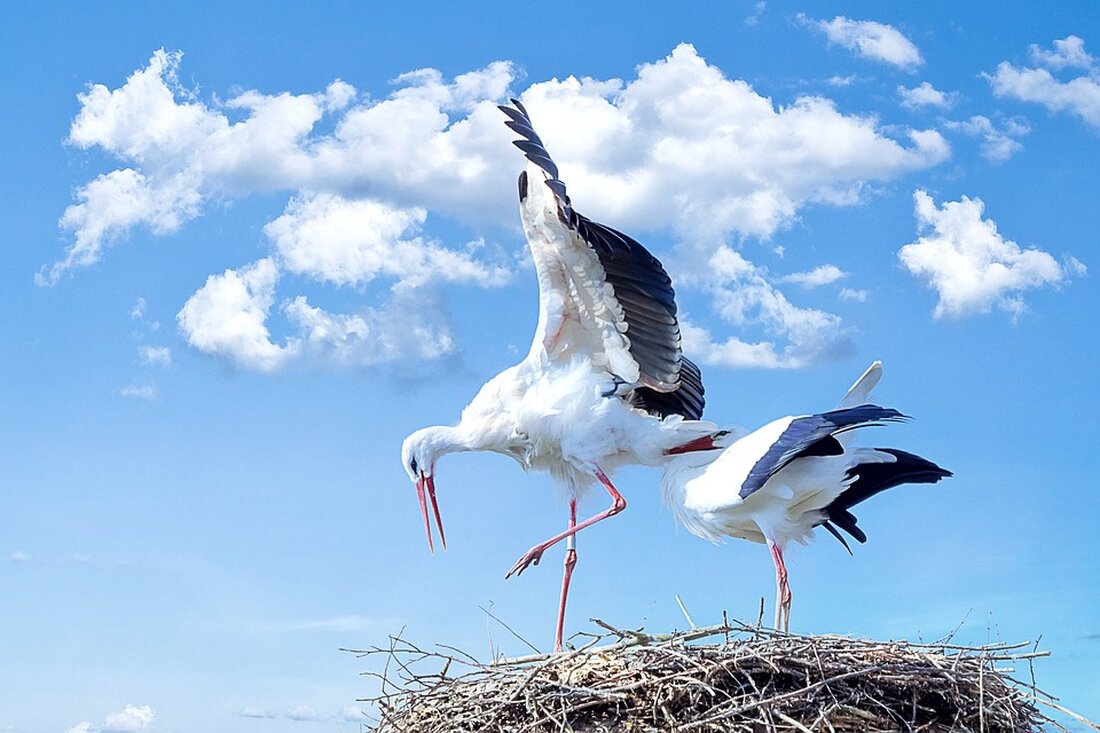Storks on an adventure trip: Experts accompany SKY to their winter quarters!
Two experts accompany two storks on their way to their winter quarters in Bulgaria, while storks are increasingly overwintering in Hesse.

Storks on an adventure trip: Experts accompany SKY to their winter quarters!
In an impressive research project, two stork experts from Mecklenburg-Western Pomerania and Lower Saxony are currently accompanying two storks on part of their journey to their winter quarters. The storks, equipped with tracking devices, fly towards Bulgaria. Helmut Eggers and Gerd Dahms follow their GPS signal and travel by car on the eastern route to Bulgaria. This trip is not only of scientific interest, but also of close attention to the flight ability of the storks, which regularly rely on daily plumage care.
The second stork, SKY from Neu Bleckede, recently began the journey. From his breeding nest he flies first to Dresden and then to Slovakia. Particularly impressive is the Sückau stork 2V271, which recently spent the night near Burgas - just 450 meters from the experts. The Sückau stork had previously reached near Bucharest on August 22, 2025 and traveled 130 kilometers to Burgas. The storks travel between 200 and 400 kilometers every day and often fly in changing group constellations.
The role of food sources
Landfills play a crucial role in the storks' food intake during their journey. These waste sites are valuable sources of food for them, which they often visit. The experts also report on bird protection measures at electrical systems in Romania, which, however, are still inadequate to adequately protect the storks.
Mild temperatures and a plentiful supply of food are crucial for numerous storks, which do not fly south as usual but instead overwinter in Hesse. In the Groß-Gerau district, especially in Büttelborn, a remarkable count of around 420 storks was observed between November and January. Büttelborn is considered the largest wintering area for storks in Germany.
Adaptations to changing living conditions
Flooded fen areas in the region offer the storks protection from natural predators such as foxes and martens. The birds find plenty of food in the form of worms and mice on the surrounding farmland. In addition, the nearby landfill is regularly flown to, as organic waste is an easy source of food. The storks have now gotten used to the landfill staff and are undisturbed there.
Most of the storks that overwinter in Hesse come from northern Hesse, Thuringia and other regions of Germany as well as the Netherlands. The wintering phases of storks are becoming increasingly shorter, and some birds are returning to their traditional habitats earlier. This is a direct adaptation to changing environmental conditions, due, among other things, to milder winters and better food resources.
So while some storks make elaborate flights to their winter quarters, others have decided to shorten their migration routes and remain in their native areas. This impressively shows how wildlife can adapt to changing climatic conditions. Another notable phenomenon are the numerous cranes, which also make their return journey early, with over 80 sightings in the Rhine-Main area.

 Suche
Suche
 Mein Konto
Mein Konto